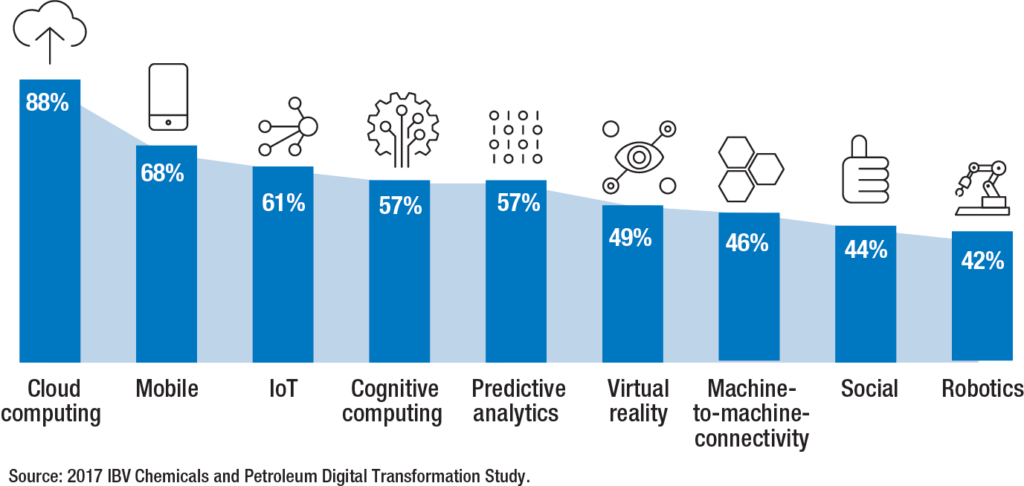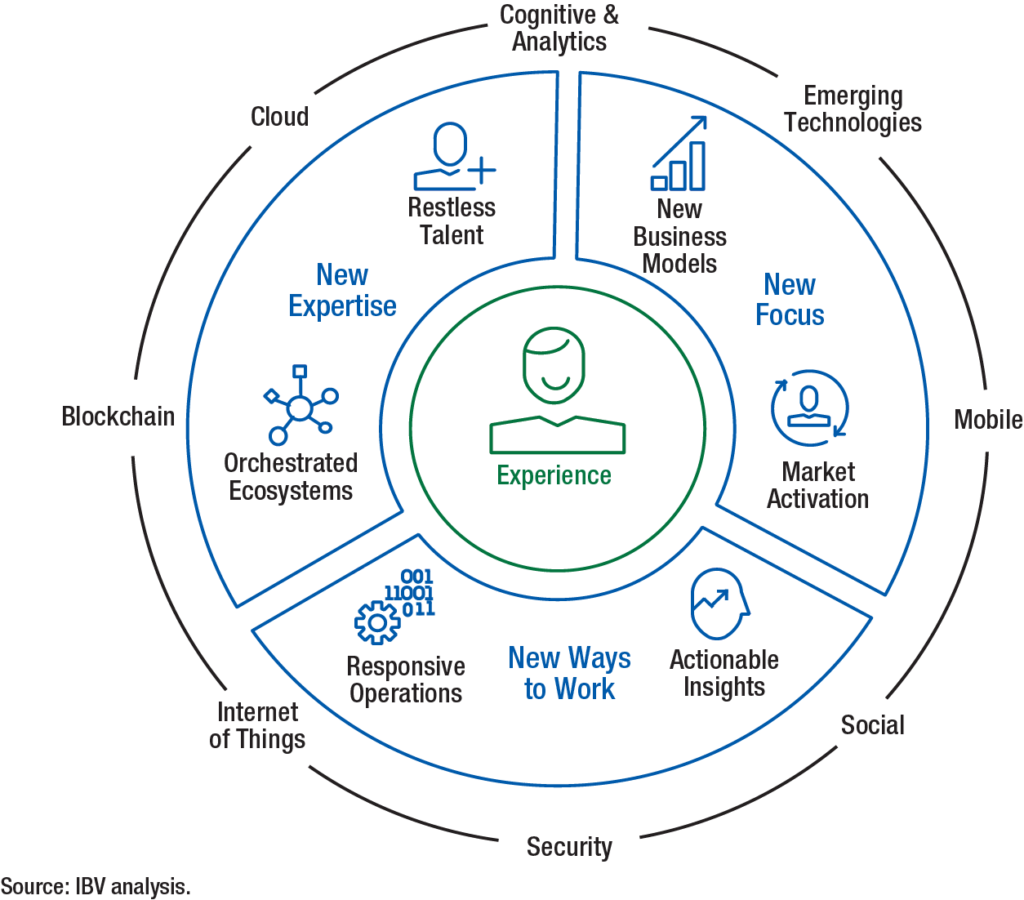The energy industry is closely monitoring new strategies and technology trends that can reinvent their operations. Many consulting groups believe that advanced technologies will transform business practices and increase competitiveness. According to Gartner, “digital business continues to align the physical and digital worlds, and technology will be embedded in everything in the digital business of the future.”1 Energy and manufacturing/processing industries are adopting the latest developments to improve operations, increase uptime, reduce costs, and achieve greater profits.
Digitalization is not a new idea. However, the latest wave of transformative developments is redefining how companies conduct business in the digital age.2 AI, IoT, the cloud, and robotics are not new technologies. What will be transformative is how companies bring together and use these tools to reinvent their enterprises.2
New ecosystem
Businesses have always collected data. Some organizations and industries are more successful in converting data into knowledge and capitalizing on information. The volume, variety, and velocity in the types of data being captured is growing almost exponentially. The looming challenge is how to successfully manage and utilize this data wave into actionable items. According to a recent IBM survey, successful petroleum organizations are embracing new technologies to drive new efficiencies, opportunities, and innovations.3 These projects require a “digital reinvention” that combines multiple technologies, as illustrated in Figure 1.3

Figure 1. Digital sources and technologies used by petroleum companies as part of their business strategies. Source: 2017 IBV Chemicals and Petroleum Digital Transformation study.3 Copyrighted IBM 2017; all rights reserved.
The digitalization/reinvention process will change the roles, skill requirements, and jobs of employees. To shepherd the digital transformation throughout the company, a new senior level position, Chief Digitalization Officer (CDO) has evolved. Strategy & PwC conducted a survey of the 2,500 largest public companies, and only 19 percent of the respondents had a CDO, with 60 percent of the new CDOs appointed since 2016. Unfortunately, the O&G and metals and mining companies ranked last in the survey with respectfully only 3 percent and 5 percent appointing a CDO.4
The digitalization transformation is not only about data and technology.5 It is about implementing new business models, solutions, and training for recently created jobs and updated existing positions within various departments of the company. New investment must support improving and simplifying thevisualization and application of data. With better contextualized data/information, employees will trust and fully utilize the new systems.
Another significant hurdle is bringing together IT and operation technology (OT) groups to work in cooperation and not in competition. Sharing data without concern over ownership is a culture barrier. This issue must be addressed and managed completely. More importantly, trust is needed by shareholders and data users so that all organizational departments believe in the transparency of the models and quickly adopt the new systems and operations.
On the way
The digitalization/transformation process has begun. As illustrated in Figure 2, many of the announced 2018 technological trends are part of the digital mesh.3 According to IHS Markit, the total number of IoT-connected devices deployed will increase from 27 billion in 2017 to over 125 billion in 2030 across all industries and application.5 In less than a decade, manufacturing/processing companies are predicted to be totally connected to their customers and suppliers in efforts to reduce total product costs, improve inventory control, and increase profitability.

Figure 2. Full view of a digital reinvention framework. Source: IBV analysis.3 Source: 2017 IBV Chemicals and Petroleum Digital Transformation study.3 Copyrighted IBM 2017; all rights reserved.
Companies never invest capital without return. Figure 2 demonstrates the ways businesses will evolve to the new normal—Industry 4.0. IIoT and digitalization will be the platform by which organizations view their operations, identify new opportunities, and open additional markets.
Data is the new ecosystem. Industry 4.0 is geared to convert data from a liability into an asset.6
Companies that do not embrace the digitalization reinvention run the risk of becoming extinct.
Literature cited
1 Panetta, K., “Gartner Top 10 Strategic Technology Trends for 2018,” Oct. 3, 2017.
2 IHS Markit, “8 in 2018: The top transformative technologies to watch this year,” 2018.
3 Matson, J. and D. M. Womack, “Extracting digital rewards: Digital Reinvention in petroleum,” January 2018.
4 Peladeau, P. et al., “The new class of digital leaders,” Strategy+ Business, Autumn 2017, Issue 88.
5 Boccara, K., “Digitalization and the industrial IoT revolution—why should you care?, Nov. 13, 2017.
6 Wood Mackenzie, “Digitalisation and the race to work smarter,” 2018.

Recent Comments